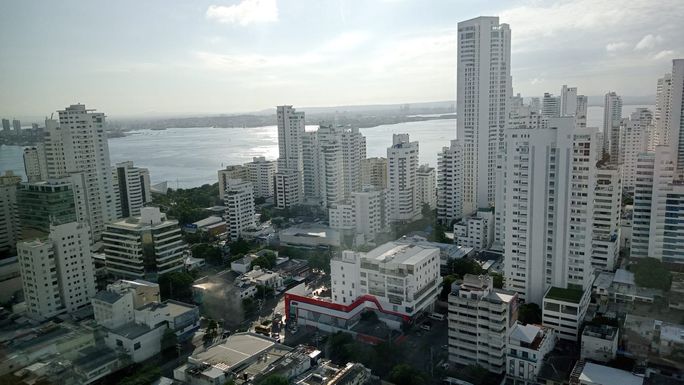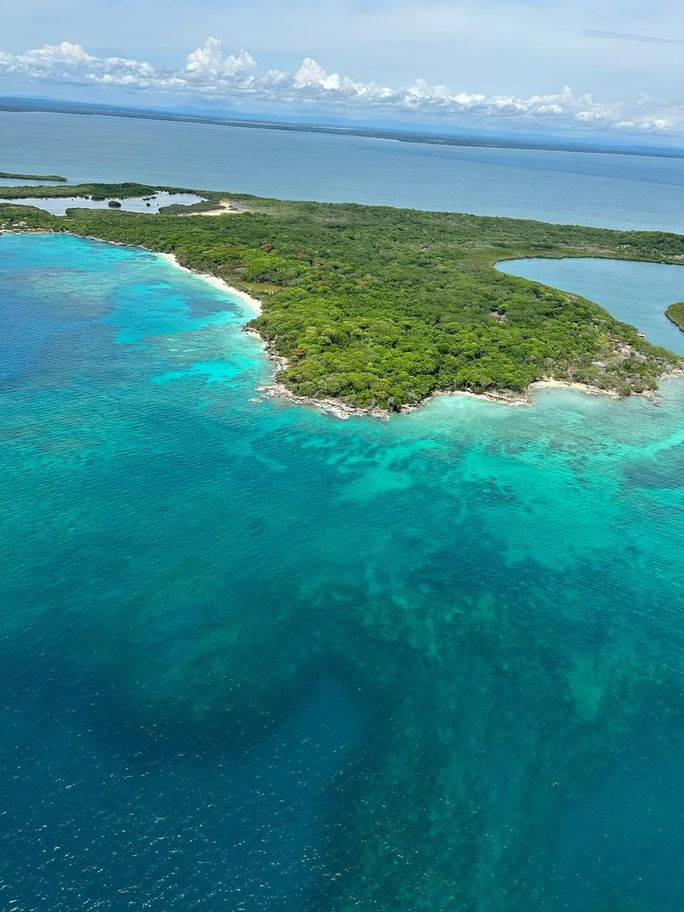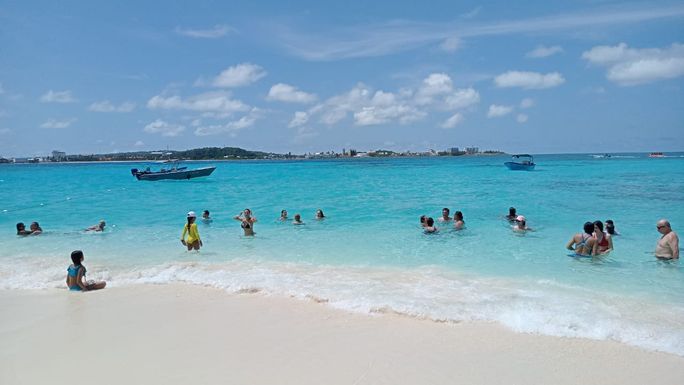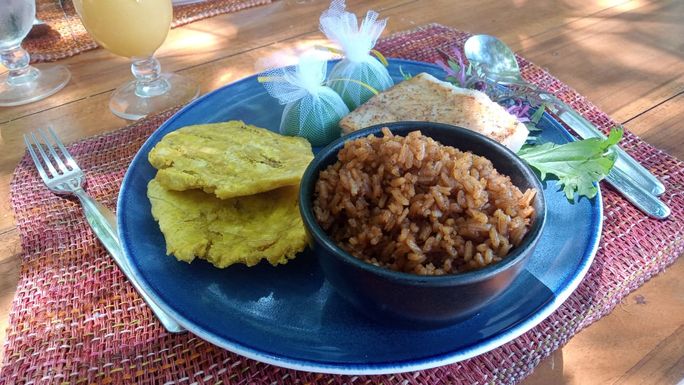In the coming months, Colombia expects the arrival of 334,000 passengers on at least 30 cruise lines from the United States, Norway, United Kingdom, Switzerland, Germany, and Monaco, representing an economic impact of approximately $50 million this year.
One of the highlights of the new season is the opening of more arrivals to emblematic ports of the Caribbean, such as Cartagena, Santa Marta, and San Andrés, where passengers have the opportunity to enjoy memorable experiences in the middle of nature and sites designated World Heritage by UNESCO.
"Particularly in the case of cruises, we are aligned with our commercial office in Miami, Florida, to see the minimum needs required by the international market," explains Juliana Rincón, Cruise and Nautical Tourism Advisor at ProColombia.
She adds that three types of cruises arrive in Colombia, including short excursions, sold on board at the expense of the line operated by a local operator (official tour operators), with predesigned packages that may include VIP experiences for exclusive groups. There are also independent packages that tourists contract directly at the port as means of transport and guide service, for example. In addition, there are online contracting options where travelers access alternative experiences to cruise lines.
"We are, for the most part, a transit cruise terminal. Cruisers arrive and depart after eight hours, and there is the possibility to extend those tours with overnight cruises that usually come one day and go the other. However, some stay two or three nights according to the cruise itinerary with which they can access hotels and experiences, " says Rincón.
Tours and Experiences in the Colombian Caribbean
Colombia offers many experiences for cruisers arriving at iconic ports such as Cartagena, Santa Marta, and San Andrés Island. Here are some examples of the attractions that tourists can enjoy:
Cartagena

Cartagena has the most efficient port in Latin America and fifth in the world. (Photo Credit: Valentin Fuentes)
This iconic walled port of the Colombian Caribbean, a UNESCO World Heritage Site, boasts historical monuments such as the Fort of San Felipe (1657), located strategically on the city's heights, where the visitor enjoys the best view of the port and the Old Town.
In addition, visitors enjoy the traditional Getsemaní neighborhood, a place with bars, restaurants, and colorful alleys full of fun, music, and culture. This is on top of exclusive gourmet restaurants like the Manga Nautical Club.
For those looking to spend a day at the beach, Cartagena offers fantastic places like Bocagrande and La Boquilla. Diving and snorkeling enthusiasts can also take boat tours to the Rosario Islands Archipelago to dive into the crystal clear waters of the Caribbean and admire a rich ecosystem of marine life that inhabits fabulous coral reefs.
Cruisers who want to spend a day or overnight in nature have luxurious world-class accommodations such as Las Islas Hotel, where they can enjoy sophisticated bungalows overlooking the Caribbean, a private beach, top-notch amenities, and signature cuisine and cocktails.
Another experience offered to tourists on cruises is a tour of a large protected area of mangroves in which the traveler can contribute to the rescue of nature by planting a mangrove plant, in addition to learning fishing techniques with the net (atarraya) of the villagers.
This experience joins a visit to the nearby Afro-descendant community of La Boquilla, where the Batámbora Corporation, a project that preserves the cultural traditions of African heritage, offers its visitors various activities, such as percussion workshops, musical instrument making, dance and traditional singing of the Colombian Caribbean with a fusion of Afro-Caribbean rhythms.

In Cartagena's La Boquilla neighborhood, cruise tourists can visit Batámbora Corporation, a project that preserves the cultural traditions of African heritage. (Photo Credit: Valentin Fuentes)
World-Class Port
According to the World Bank, the Port of Cartagena is the most efficient in Latin America and fifth in the world. It has a productivity of 40 movements per hour and handles ships of up to 14,000 containers in a dock of 700 meters long.
“The port is divided between cargo and cruise sections with special positions for each of them,” explains María Emilia Bonillas, Commercial Coordinator of the Cartagena Cruise Terminal.
Besides being one of the most efficient in the world, this port terminal is also one of the most innovative. One of its main attractions is the Port Oasis EcoPark, a zoo in the port that tourists can visit just by arriving. “The animals were given to us by the Colombian Environmental Agency for having been part of the illegal trade, among others. We have zoologists, veterinarians, biologists, feeders, gardeners,” says Bonillas.

In Port Oasis EcoPark, rescued animals live entirely free. (Photo Credit: Valentin Fuentes)
Here, visitors walk through a series of gardens where hundreds of bird species (flamingos, parrots, geese, ducks, toucans, peacocks, among others.) live freely with a large number of mammals, such as anteaters, sloths, monkeys, and red squirrels, to name a few. "The animals are in the process of rehabilitation, and if specialists decide they can return to the wild, we release them, but if they can't stay with us," the directive clarifies.
Santa Marta
This Caribbean port was the first Spanish settlement in Colombia, and it was the place where the emblematic continental liberator Simon Bolivar died. The fascinating architecture of the streets of its Historic Center combines colonial style with neoclassical and modern, which makes the visitor enjoy pleasant walks to end the day enjoying impressive sunsets on the boardwalk.
Santa Marta is the ideal place for nature lovers because it is the gateway to the Tayrona National Natural Park and archeological sites such as the mythical Lost City, both located in the privileged area of the Sierra Nevada, where flora and fauna abound, as well as virgin beaches, waterfalls, and streams. Divers and snorkelers can not miss a large area of protected reefs where they enjoy the best visibility due to the transparent waters of this privileged place.

Santa Marta is one of the most beautiful and emblematic cruise destinations in the Colombian Caribbean. (Photo Credit: Juliana Rincón)
For those looking for luxury ecotourism experiences, the Eco-Hotel Taironaka, located in Tairona territory, offers accommodation and high-end cuisine, as well as excellent places for activities such as bird watching (there are more than 700 species), trekking along cobbled trails where terraces and ceremonial centers of the ancient Kogui civilization are located, and a museum that exhibits important archeological pieces of the Tairona culture.
Growing Port
“For this 2023-2024 season, we expect to receive 22 cruises. We’ve continued to increase our numbers since the pandemic, and we’re getting back the numbers we had before the pandemic,” says José Canedo, Commercial Coordinator of the Port of Santa Marta.
He explains that one of the significant advantages of the port is its proximity to the city of Santa Marta and the attractions of the Historic Center since passengers on cruises take only two minutes on the transfer.
“We allow tour operators to pick up short excursion cruisers from the dock and take them directly from the harbor entrance. We provide internal shuttles for independent and crewed cruisers to transport them from the pier to a pedestrian crossing that leads directly to the city. Shuttles are constant depending on the size of the cruises.”
Canedo says the deepest docks are 57 feet deep, allowing them to receive unrestricted oversized ships such as a Norweigan cruise of more than 360 yards. It should be noted that the port of Santa Marta combines cargo and cruise operations with very well-calculated logistics operations.
“It's a small port with seven docks, and we need to optimize operations. Where the cruisers disembark, we have a space to receive them with traditional regional dances, a launch for the crew, and a point of tourist attention and security with tourist police,” he says.
San Andrés Island

San Andrés Island is a privileged place to enjoy the wonders of the Caribbean. (Photo Credit: Valentin Fuentes)
Cruise tourists who visit this paradisiacal Caribbean Island, declared a World Biosphere Reserve by UNESCO and known as the Island with the Sea of Seven Colors, enjoy one of the best spots for water sports. Diving and snorkeling enthusiasts enjoy a rich biodiversity on its fantastic coral reefs in crystal clear and warm waters.
San Andrés is the largest island in the Archipelago, that also includes Providencia and Santa Catarina. Its white sandy beaches are perfect for spending a day of sun, sea, cocktails, ceviche and calypso, reggae, reggaeton, soca, vallenato, salsa, polka, and mazurka, among other music varieties.
An excellent option for families is Aquarium Beach, accessible by boat and where the water is so shallow that it barely reaches the knees, despite being more than 100 yards from the shore. Here, visitors can spend the day surrounded by hundreds of fish species.
In San Andrés Island, the cruise traveler has a varied repertoire of activities to spend the day before returning to the cruise. In addition to enjoying the fabulous beaches, they can visit exciting and fun places such as the famous Pirate Morgan Cave, enjoy the port architecture, and get to know up close the culture of this village where English, Dutch, and Spanish traditions are mixed, for its colonial heritage, and where the local language is Creole, a variation of English with African roots.

In the destinations of the Colombian Caribbean, cruise tourists enjoy exquisite cuisine made with local products. (Photo Credit: Valentin Fuentes)
With these privileged world-class destinations, Colombia is undoubtedly the best way to conclude a cruise tour through the amazing Caribbean Sea.
Cruise Lines With Most Arrivals to Colombia
Colombia expects a boom in the 2023-2024 cruise season. These are some of the cruise lines that will have the most activity:
- Royal Caribbean International
- Princess Cruises
- Norwegian Cruise Line
- Holland America Line
- Celebrity Cruises
- TUI Cruises
- Windstar Cruises
- MSC Cruises
- AIDA Cruises
- Oceania Cruises
- Silversea
For the latest travel news, updates and deals, subscribe to the daily TravelPulse newsletter.
Topics From This Article to Explore